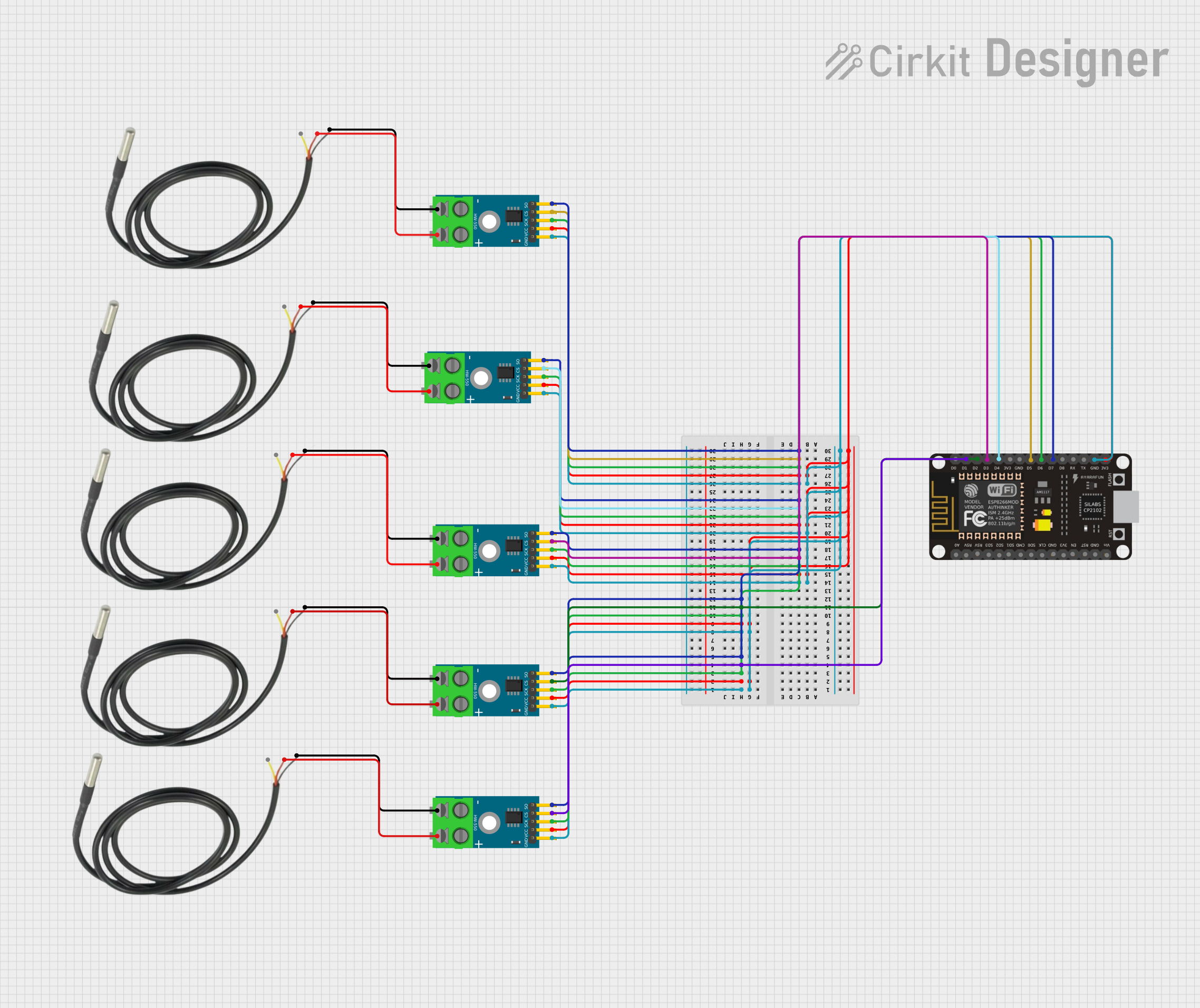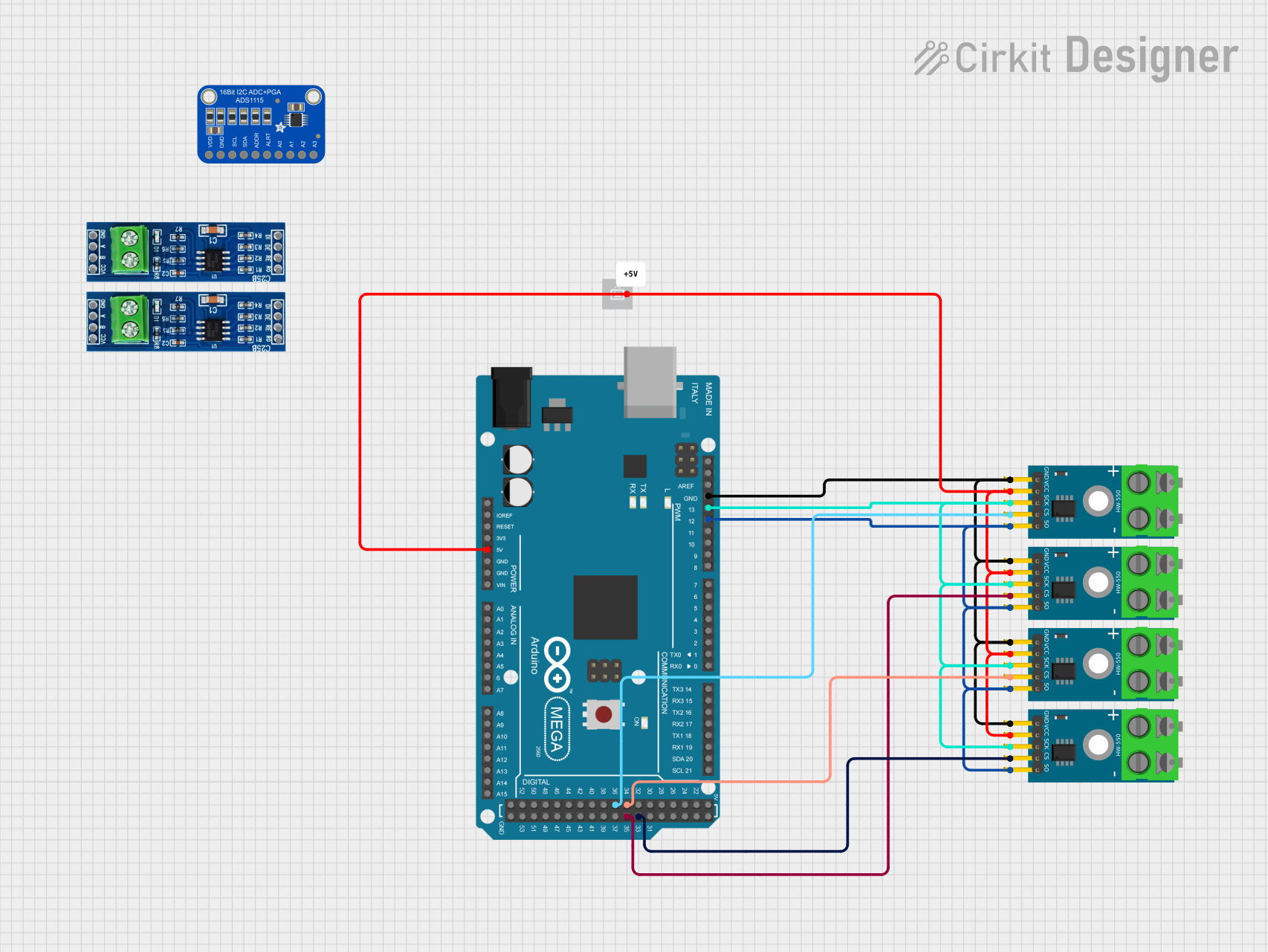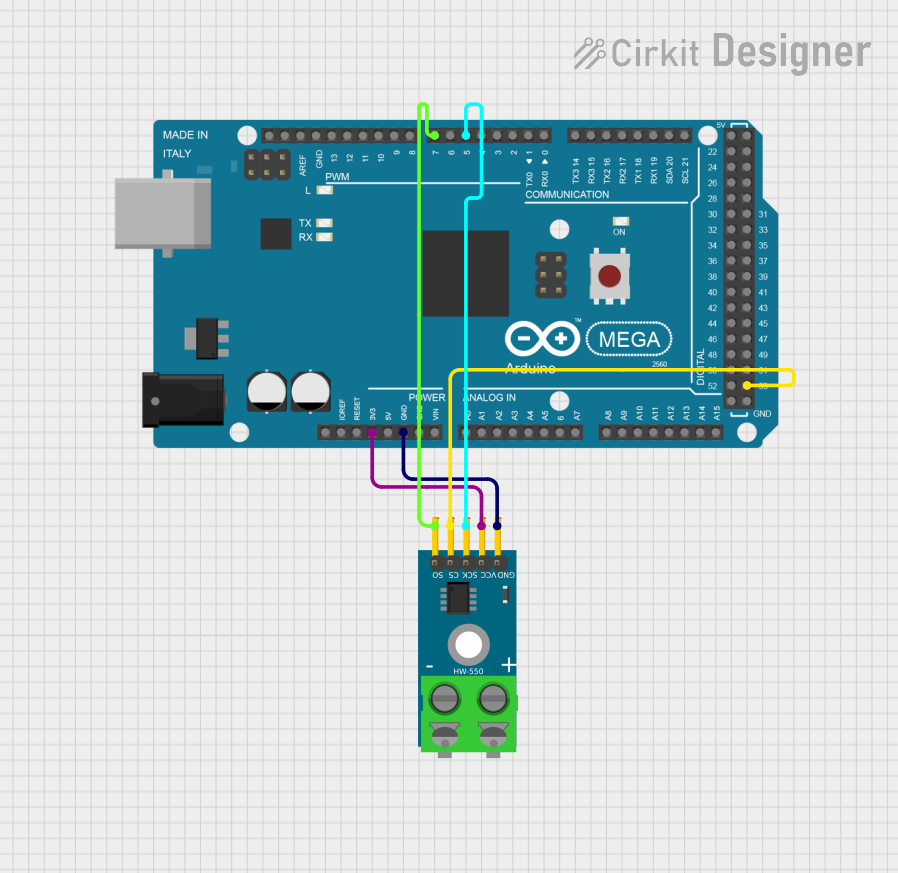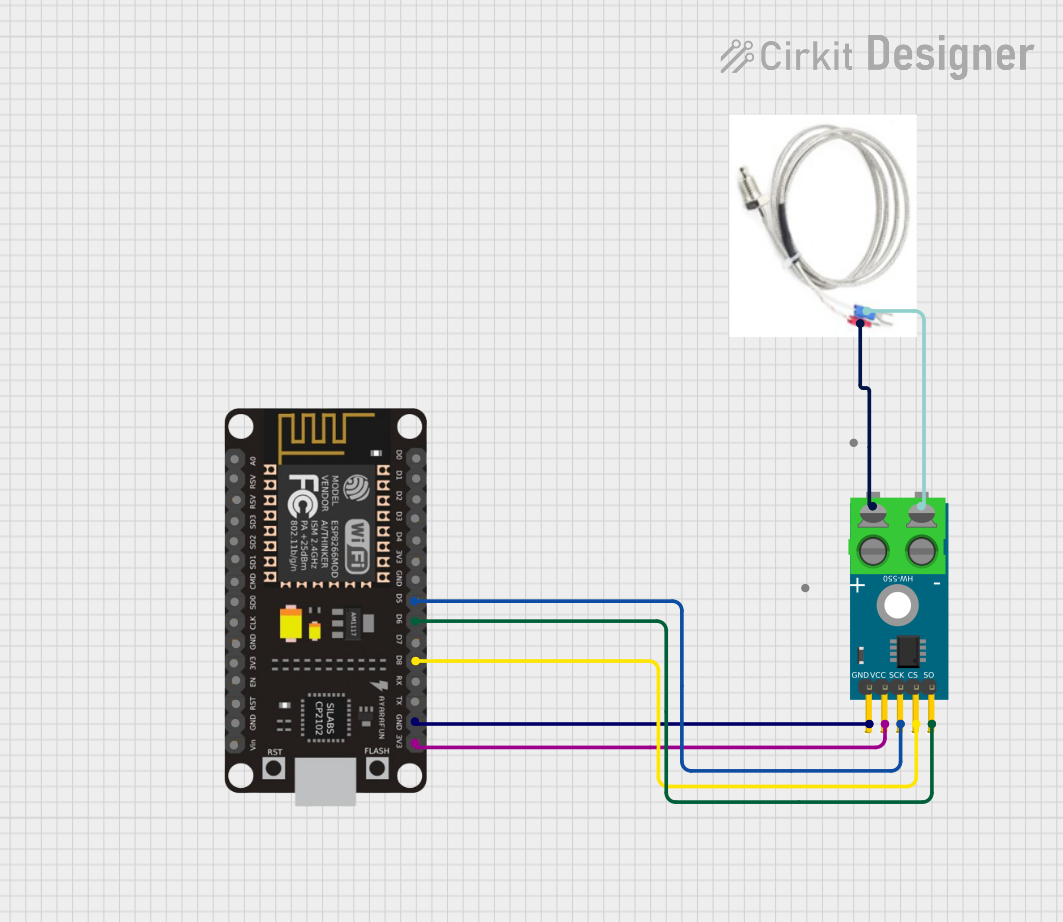
How to Use MAX6675 Module: Examples, Pinouts, and Specs
 Design with MAX6675 Module in Cirkit Designer
Design with MAX6675 Module in Cirkit DesignerIntroduction
The MAX6675 Module is a compact and efficient solution for temperature measurement applications. It interfaces with a K-type thermocouple and provides a digital output corresponding to the measured temperature. This module is widely used in systems requiring temperature control and monitoring, such as 3D printers, HVAC systems, and various industrial processes.
Explore Projects Built with MAX6675 Module

 Open Project in Cirkit Designer
Open Project in Cirkit Designer
 Open Project in Cirkit Designer
Open Project in Cirkit Designer
 Open Project in Cirkit Designer
Open Project in Cirkit Designer
 Open Project in Cirkit Designer
Open Project in Cirkit DesignerExplore Projects Built with MAX6675 Module

 Open Project in Cirkit Designer
Open Project in Cirkit Designer
 Open Project in Cirkit Designer
Open Project in Cirkit Designer
 Open Project in Cirkit Designer
Open Project in Cirkit Designer
 Open Project in Cirkit Designer
Open Project in Cirkit DesignerCommon Applications and Use Cases
- Temperature monitoring in industrial systems
- Overheat protection circuits
- 3D printer temperature control
- Homebrewing and cooking temperature regulation
- Data logging environmental temperatures
Technical Specifications
Key Technical Details
- Temperature Resolution: 0.25°C
- Temperature Range: 0°C to +1024°C
- Supply Voltage: 3.0 to 5.5V
- Operating Current: 50mA
- Output Format: SPI-compatible, 12-bit, 0.25°C resolution
Pin Configuration and Descriptions
| Pin Number | Pin Name | Description |
|---|---|---|
| 1 | VCC | Power supply (3.0 to 5.5V) |
| 2 | GND | Ground |
| 3 | SCK | Serial Clock Input |
| 4 | CS | Chip Select (active low) |
| 5 | SO | Serial Data Output |
| 6 | T+ | Thermocouple positive input |
| 7 | T- | Thermocouple negative input |
Usage Instructions
How to Use the Component in a Circuit
- Connect the VCC pin to a 3.0 to 5.5V power supply.
- Connect the GND pin to the ground of the power supply.
- Interface the SCK, CS, and SO pins with the SPI pins of a microcontroller, such as an Arduino UNO.
- Connect the K-type thermocouple to the T+ and T- pins, ensuring correct polarity.
Important Considerations and Best Practices
- Use a decoupling capacitor close to the VCC and GND pins to filter out noise.
- Keep the thermocouple wires away from electrical noise sources to prevent inaccurate readings.
- Ensure that the thermocouple is properly connected with the correct polarity to the T+ and T- pins.
- Use twisted pair wires for the thermocouple to reduce electromagnetic interference.
Example Code for Arduino UNO
#include <SPI.h>
// Define MAX6675 SPI pins
const int thermoDO = 4;
const int thermoCS = 5;
const int thermoCLK = 6;
void setup() {
// Initialize serial communication
Serial.begin(9600);
// Set SPI pins to output
pinMode(thermoCS, OUTPUT);
pinMode(thermoCLK, OUTPUT);
pinMode(thermoDO, INPUT);
// Disable device to start with
digitalWrite(thermoCS, HIGH);
// Initialize SPI
SPI.begin();
}
double readTemperature() {
// Ensure CS is low to enable the module
digitalWrite(thermoCS, LOW);
delay(1);
// Read temperature data
uint16_t v = SPI.transfer16(0x0000);
// Disable the module
digitalWrite(thermoCS, HIGH);
// Process the raw data
if (v & 0x4) {
// Detect if thermocouple is disconnected
return NAN; // Return Not-A-Number
}
// Remove unused bits
v >>= 3;
// Convert to Celsius
return v*0.25;
}
void loop() {
// Read and print temperature
double temperature = readTemperature();
if (!isnan(temperature)) {
Serial.print("Temperature: ");
Serial.print(temperature);
Serial.println(" C");
} else {
Serial.println("Error: Thermocouple disconnected!");
}
// Wait for a bit before reading again
delay(2000);
}
Troubleshooting and FAQs
Common Issues Users Might Face
- Inaccurate Temperature Readings: Ensure that the thermocouple is properly connected and not subject to electrical noise.
- No Data Output: Check the wiring and connections, and ensure that the SPI interface is correctly initialized.
- Intermittent Readings: Verify that the power supply is stable and that there is a decoupling capacitor in place.
Solutions and Tips for Troubleshooting
- Double-check the polarity of the thermocouple connections.
- Use shielded cables for the thermocouple to minimize interference.
- Ensure that the module is not exposed to temperatures beyond its specified range.
FAQs
Q: Can the MAX6675 Module be used with other types of thermocouples?
A: No, the MAX6675 is specifically designed for K-type thermocouples.
Q: How long can the thermocouple wires be?
A: The length can vary, but it's recommended to keep the wires as short as possible to prevent signal degradation. If longer wires are necessary, use shielded cables.
Q: What is the maximum temperature the MAX6675 can measure?
A: The MAX6675 can measure temperatures up to +1024°C.
Q: Can I use multiple MAX6675 modules with one microcontroller?
A: Yes, you can use multiple modules by connecting each CS pin to a separate digital output on the microcontroller and selecting the appropriate device before communication.